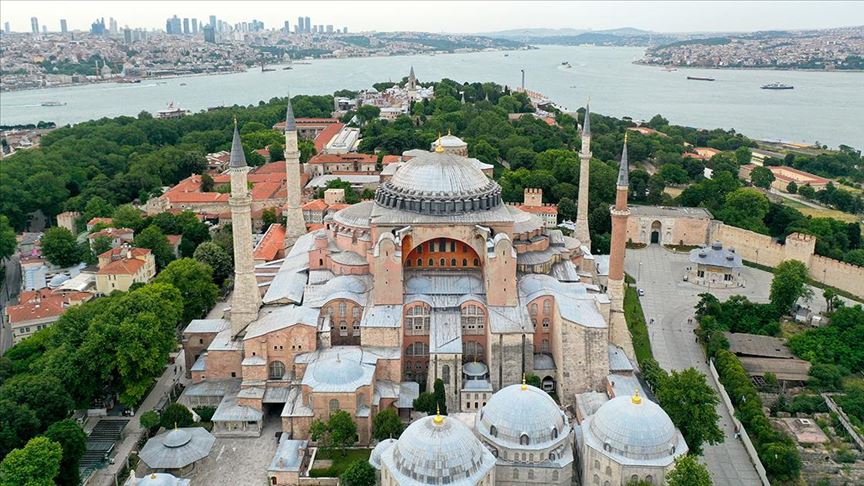
Hagia Sophia, located in Istanbul, Turkey, is one of the most famous and historic buildings in the world. Its history dates back to the 6th century.Byzantine Emperor Justinian I. built it as a Christian basilica.The building has undergone several changes and has served different purposes throughout history.
Construction of Hagia Sophia began in 532 AD and was completed in 537 AD. It was the largest cathedral in the world for over 1,000 years until the completion of the Seville Cathedral in Spain in the 16th century. The original Hagia Sophia was a basilica with a rectangular nave and two side aisles, topped by a semi-circular apse at one end. The building was adorned with intricate mosaics and decorations, including a large mosaic of Christ Pantocrator in the dome.
In 1453, when the Ottoman Empire conquered Constantinople (now Istanbul), Hagia Sophia was converted into a mosque by Sultan Mehmed II. The building underwent several renovations to transform it into a mosque, including the addition of minarets and the removal of some Christian symbols and decorations.
In 1935, after the establishment of the secular Turkish Republic, Hagia Sophia was converted into a museum by the government. It underwent extensive restoration and renovation work to restore some of its original Christian elements, including the uncovering of some mosaics that had been plastered over.
In July 2020, the Turkish government announced that Hagia Sophia would be reconverted into a mosque, which has been met with controversy and criticism from some parts of the world. The building remains an iconic symbol of Istanbul and a testament to the city’s rich and complex history, serving as a cultural and historical monument for visitors from around
